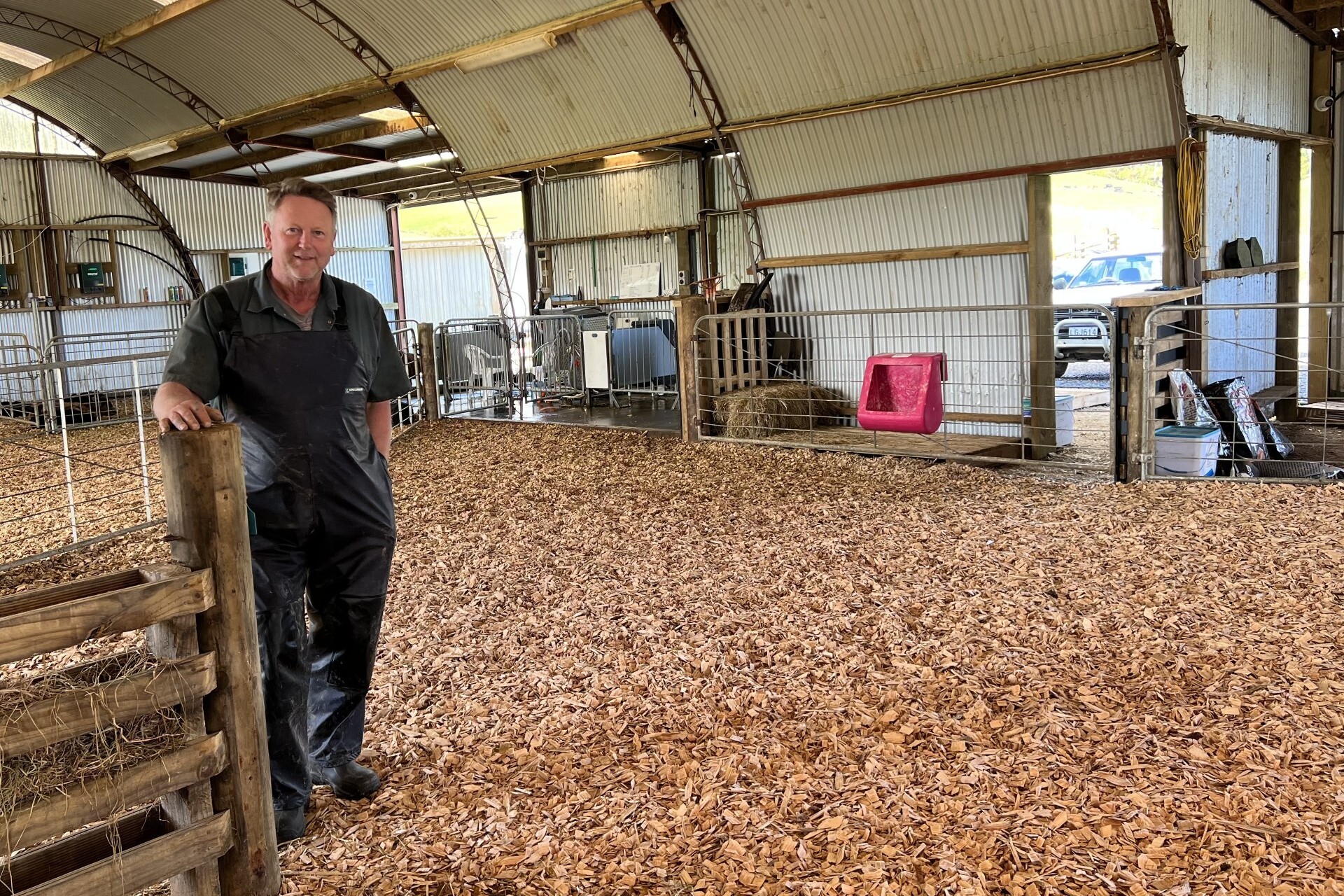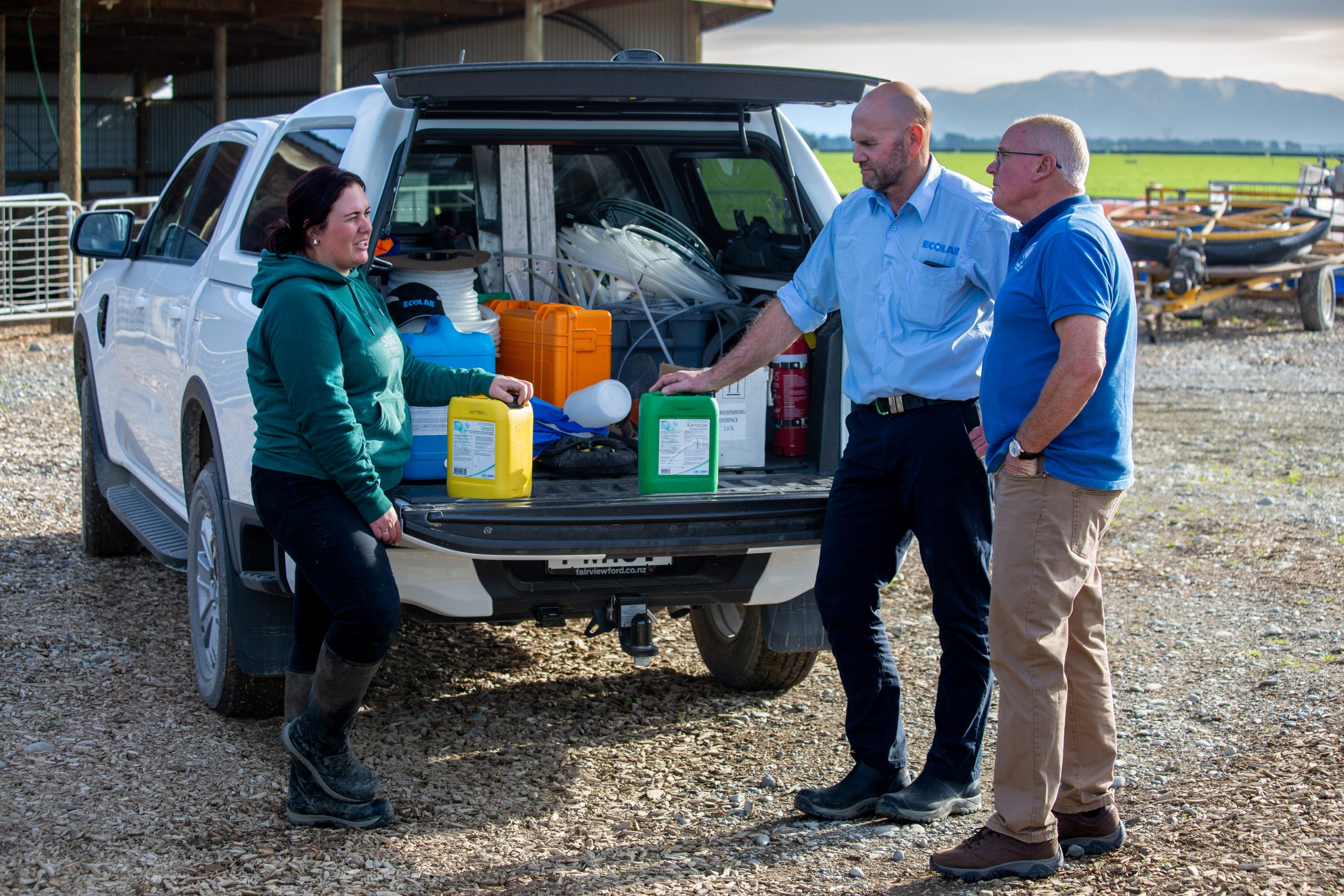Sheryl Haitana
Dairy farmers need to act against facial eczema which is a hidden disease that can cost them thousands of dollars a year in lost milk production, dairy veterinarian and researcher Emma Cuttance says.
Sub-clinical liver damage is prevalent and unseen to the eye and causes a significant issue that more farmers need to test for and monitor.
“The clinical side of facial eczema is so minor in the big scheme of things, but everyone is so focused on it. It’s not ideal as it’s not actually a disease you can (often) see.”
Emma and her colleague Winston Mason from VetEnt Research headed up a two-year study on facial eczema funded by the Ministry for Primary Industries’ (MPI) Sustainable Farming Fund (SFF).
The study tested around 6000 cows across New Zealand and monitored their milk production, body condition score, survival, disease prevalence and reproductive performance.
The cows were blood tested to check for GGT (gamma-glutamyl transferase enzyme) concentrations. Greater than 300 IU/L were considered to have severe facial eczema.
In the first year 26% of the cows developed severe liver damage GGT, with only 2.7% showing clinical signs. In the second year there were herds with up to 96% of cattle with liver damage but still only a handful with clinical signs.
These cows produced less milk than healthy cows.
“Every single farm that had cows with liver damage were losing milk,” Emma says.
“It’s hitting farmers hard in the pocket – they’re losing 0.04-0.35kg (average 0.14kg) milksolids per cow per day. We worked out that one of the herds in our study had lost $125,000, just in milk production alone.”
Often during the summer months, milk production is slowing down anyway, so the impact of facial eczema on milk production can be missed.
To make it worse, cows that suffered from liver damage in the first year, also produced less milksolids the following season, even if they didn’t suffer any liver damage in the second year.
“Even if there is no facial eczema damage the following year, it still was affecting their milk production.”
 This indicates that the effect of liver damage has longer lasting effects than expected. Although the liver has an ability to regenerate, perhaps even with this regeneration, the liver cannot sustain the performance of a high-producing cow.
This indicates that the effect of liver damage has longer lasting effects than expected. Although the liver has an ability to regenerate, perhaps even with this regeneration, the liver cannot sustain the performance of a high-producing cow.
Cows that suffer from liver damage from facial eczema in the first year were 2.6 times more likely to get facial eczema the following season, she says.
That could be that those cows are more susceptible to facial eczema through genetics, or it could be other behaviours such as their grazing behaviour (grazing poor pasture), Emma says.
Of the herds studied, anywhere from 11% up to 96% of the cows in the herd had liver damage.
Many of these farms that were part of the study were dosing cows with zinc, either through supplement, drenching or water treatment, but the cows were just not getting enough.
Farmers need to be checking their spore counts regularly and doing blood tests to monitor their cows, she says.
Blood testing is the best way to determine how badly affected the cows are if they have facial eczema. Farmers can test 15 cows in their herd to gauge how their herd is affected. It is also the best way of determining if cattle are receiving enough zinc to protect against the toxin.
“However, getting farmers to do blood tests can be tricky because of the cost and time involved,” Emma says.
“There is still only a minority of farmers that are checking.
“If our project can improve the number of farmers effectively managing this disease by even 20%, it will make a phenomenal improvement to the productivity, animal welfare and sustainability of the dairy industry.”
With global warming, farmers might need to start treating cows earlier or for longer during at risk periods.
“It’s a problem that’s not going away. Traditionally we would think about treating for facial eczema in January and February – but it doesn’t work like that anymore, we can’t work on set dates.”
Farmers should regularly monitor spore counts on their own farm to know when to start treatment and when to stop. This is just as important for not treating too early as it is for starting too late.
The actual spore count figure isn’t always what to watch, it’s the trend, Emma says.
“If the spore count has shot up quickly from 10,000 to 40,000 that’s a concern, that’s increasing quickly and those new spores are very toxic.”
Farmers can take samples of pasture from their farm in to their local vet to test for spore counts, or they can buy a microscope and learn to do it themselves.
Buying a microscope is a bigger upfront cost, but it allows farmers to have closer management over what is happening on their own farm.
Genetics play a big part in facial eczema management and will be even more important in the future because zinc may become a limited resource, Emma says.
Zinc is currently the main way of treating facial eczema, however, Emma would like to research other treatments or products.
Another approach to helping farmers monitor and detect liver damage would be to analyse livers at the meat works, Emma says.
If processing plants were required to grade livers according to damage and report back to farmers it would increase understanding of how serious the issue is.
An unhealthy liver affected by facial eczema can be easily seen by eye, and there is research happening looking at testing livers for facial eczema damage, Emma says.
The next step is to get the word out via a range of resources, which will be made available through DairyNZ’s website. These include an online cost calculator, an investigation tool for testing zinc, and educational videos and webinars.
View the two educational videos on Youtube:
Part 1: FE in dairy cattle – let’s start thinking about it
Part 2: Managing FE in dairy cattle effectively.





